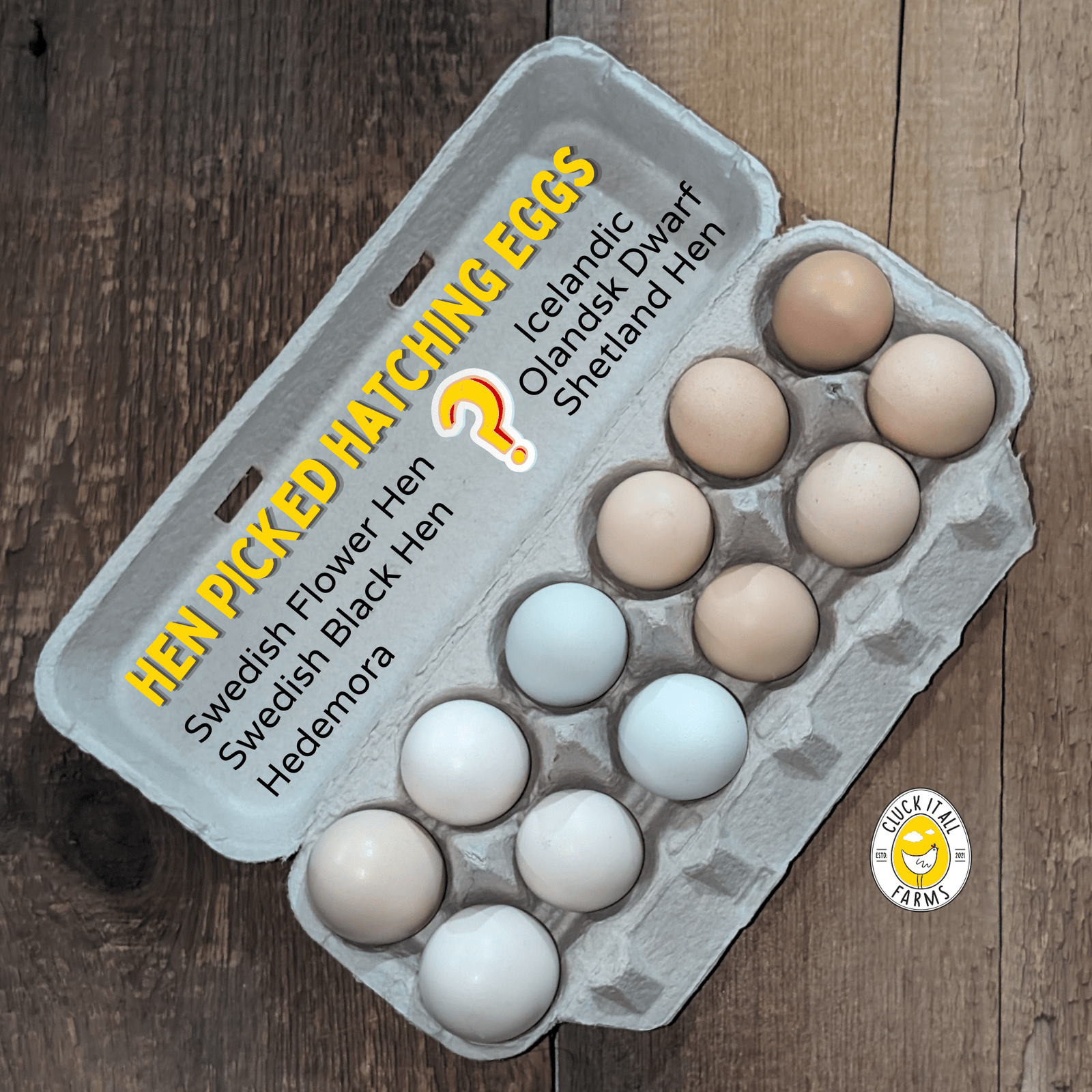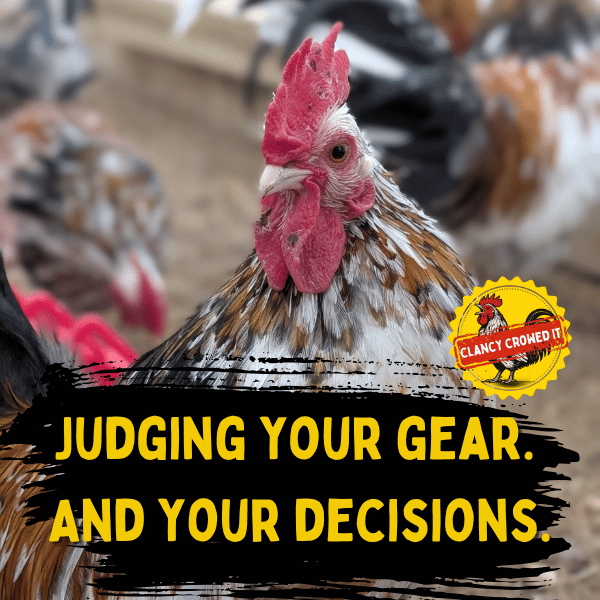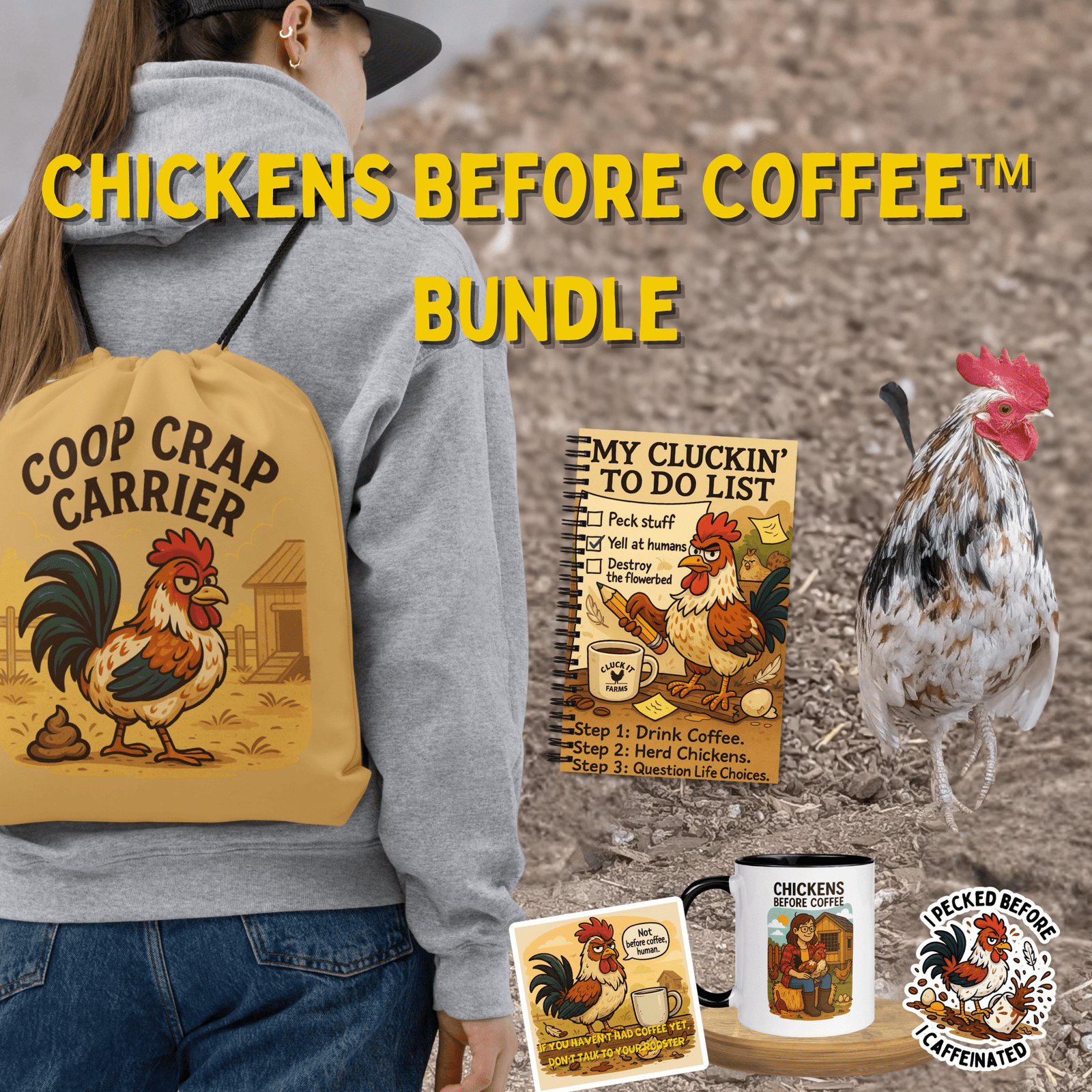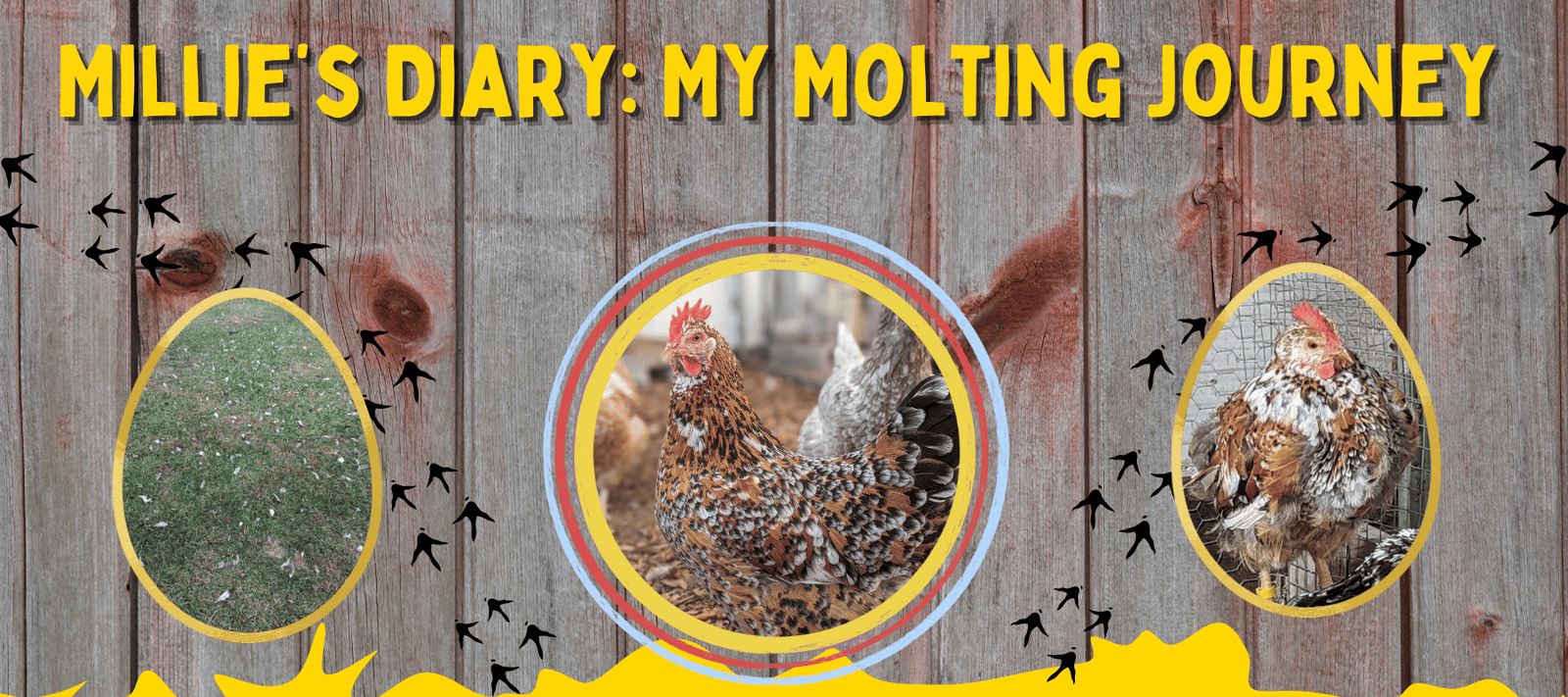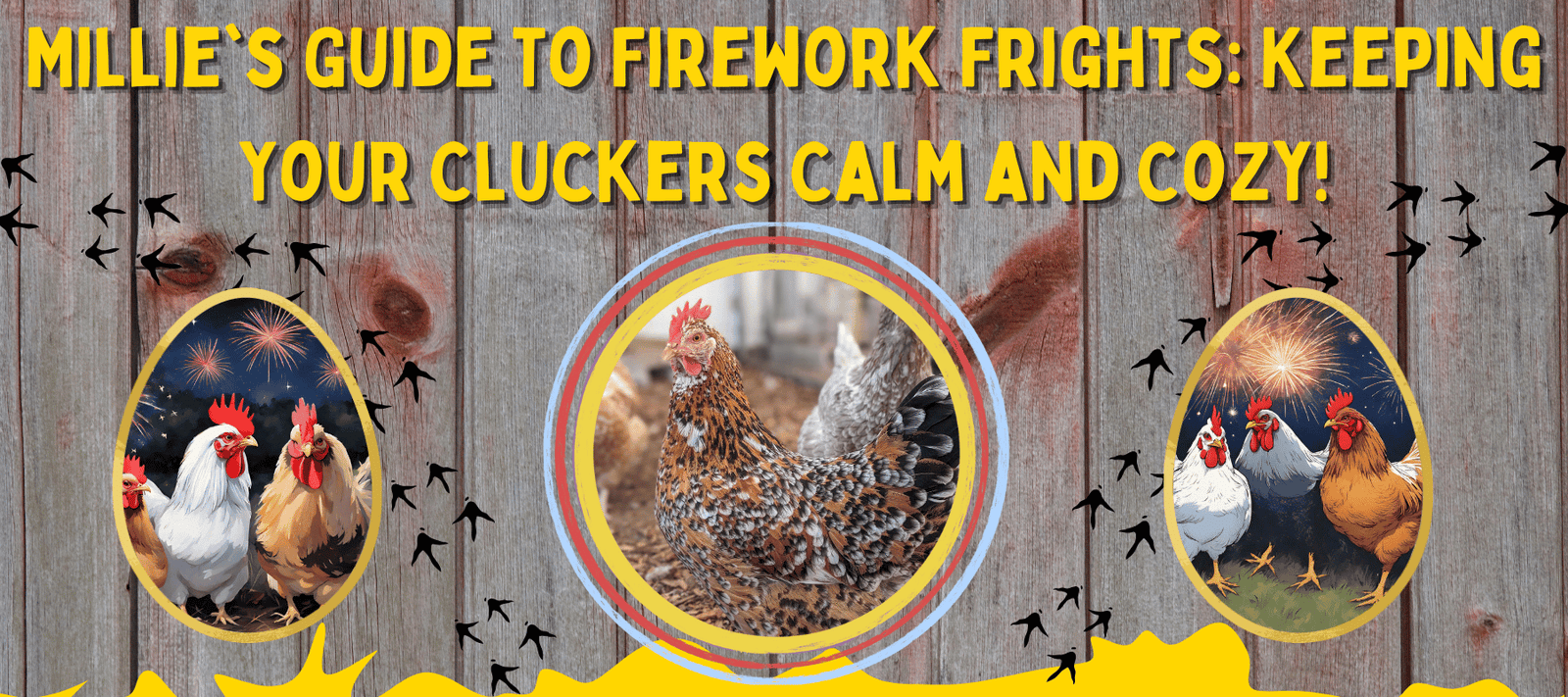Hello, cluck-stars! Millie the Swedish Flower Hen here, bringing you all the autumnal awesomeness from Cluck It All Farms. As the leaves go from green to gorgeous and the air turns crisp, our needs as chic chickens also undergo a transformation. Let’s feather-dive into how to get your flock superbly prepped for fall, shall we?
Feathered Foodie Favorites: The Autumn Edition
Contrary to popular belief, we chickens don't actually need more calories to keep warm during the fall. Our natural body temperature is already higher than humans, and our feathers do a great job of insulating us. Yep, we've got built-in down jackets!
That said, autumn brings with it a host of seasonal flavors that can be delightful for us feathered foodies. How about tossing some pumpkin seeds our way? They're not only tasty but also a great source of vitamins and minerals. You could also offer us small apple slices or a sprinkle of dried cranberries for a tart kick.
Remember, treats should be a small part of our diet—around 10% or less—to ensure we get the majority of our nutrients from balanced chicken feed. Plus, a balanced diet is key to maintaining our health and egg-laying abilities. So go ahead and give us a little autumnal treat, but keep it moderate, folks!
Cozy Coop Capers: Draft-Free Yet Ventilated, That’s How We Roll
Alright, let's set the record straight: insulation is nice, but what a chicken coop really needs as the weather cools down is to be draft-free while maintaining good ventilation. Confused? Don't worry; let's cluck it through, step by step.
First off, check for drafts by doing the "flashlight test." When it’s dark outside, shine a flashlight along the coop’s walls, floors, and especially corners. If you see light penetrating through gaps, then those are draft areas. Use weather stripping or caulking to seal up these gaps. This makes sure we don’t feel those icy winds while we’re snoozing away.
But don’t mistake being draft-free for being air-tight. Proper ventilation is crucial for our health. Poorly ventilated coops can lead to moisture buildup, which is a breeding ground for respiratory issues and frostbite. The coop should have vents or windows located near the top, ensuring good airflow but also preventing direct drafts on us.
If your coop has windows, consider adding weather-resistant covers or shutters. You can open these up on milder days for extra air circulation and close them when it's particularly windy or rainy. This gives you flexibility in controlling the coop environment.
And speaking of windows, why not get a little creative? Add a fall-themed curtain made from breathable fabric. This won’t just keep potential drafts at bay; it adds a pop of seasonal charm to our dwelling. Just be sure these decorative touches are safely out of our curious beaks' reach. We might be tempted to give them a nibble!
So, there you have it! Making your coop draft-free yet well-ventilated is more than doable. It's essential for our comfort and health as we waddle our way through the fall season. Time to get cluckin' on those coop upgrades!
Pest-B-Gone Strategies: Uninvited Guests, Be Gone!
Ah, fall! The season of pumpkins, golden leaves, and... unwanted guests? That's right; as the temperatures drop, pests like mice, rats, and mites might think our cozy coops make for a perfect winter getaway. Well, not on our watch! Here's how to make sure your coop remains a pest-free zone.
First up, let's talk coop structure. If you've used chicken wire, consider a switch to hardware cloth. Chicken wire keeps us in but doesn’t do much to keep those pesky rodents and insects out. Hardware cloth is sturdier and offers smaller openings, making it difficult for unwanted visitors to squeeze through.
Now, onto the natural stuff! Spices and herbs aren't just for flavoring your Thanksgiving dinner; they can also deter pests. Think about adding sachets filled with herbs like mint or lavender in the corners of the coop, near the nesting boxes, and even in our run. These plants are known to be natural repellents for various pests and have the added bonus of making our homes smell lovely!
Regularly clean the coop to remove food scraps and droppings, which are basically invitations for pests. Perform a deep clean at least once a month. During these cleaning sessions, lift up all the bedding, check for signs of tiny invaders like droppings or bite marks on wooden structures, and replace any compromised materials.
Last but not least, don’t underestimate the power of a regular coop inspection. A quick daily check can go a long way in early pest detection. If you catch signs of an infestation early, it's much easier to handle before it gets out of control.
By taking these measures, you can ensure that the only ones enjoying your coop this fall are those who actually belong there—your cluck-tastic flock!
Bedding Bonanza: Make the Right Choices for a Dry, Cozy Coop
When the weather cools down, you might be tempted to just pile on the bedding to keep us cozy. However, not all bedding is created equal, and some materials are better suited for a fall coop than others. Let's dig into the details, so your coop is both comfy and safe.
If you're considering wood shavings, go for pine shavings rather than cedar. Cedar can produce fumes that are harmful to us chickens. Pine shavings, on the other hand, are safer and provide good moisture absorption, making them a good choice for keeping the coop floor dry.
But wait, there’s an MVP in the bedding world—construction sand. This isn't your typical beach sand; construction sand is more absorbent and dries out much faster. It's also super easy to clean. Just imagine it as the cat litter for coops. With a rake or a scoop, you can easily remove droppings daily. Plus, the sand’s gritty texture is beneficial for our digestive systems when we peck at it. It’s a win-win situation!
Straw might seem like a cozy and rustic choice, especially in those picturesque farm photos, but it’s not the best option for bedding. Why, you ask? Straw is less absorbent and can retain moisture, creating a breeding ground for parasites like mites and lice. Also, once straw gets wet, it tends to stay damp, increasing the chances of mold growth and creating an unhealthy environment for us.
So, the key to a well-bedded coop this fall is choosing materials that are absorbent, easy to clean, and safe for us feathery inhabitants. Whether you opt for pine shavings or go all-in on construction sand, make sure you’re making the best choice for your flock’s health and comfort.
Fowl Fashion: Sweaters, Yes or No?
Okay, you've seen the adorable pictures: chickens in sweaters, looking cute as a button. But let's talk facts: do we really need them? In most cases, the answer is a resounding "No!"
Our feathers are incredibly efficient at keeping us warm. When we fluff them up, we trap air underneath, creating an insulating layer that keeps us toasty. So, while a sweater might seem like a kind gesture, it can actually mess with our natural thermoregulation processes. Plus, sweaters can become dirty or wet very quickly, and this can lead to conditions like mold growth or even frostbite.
That doesn't mean you can't have some fun with fowl fashion. Consider other types of accessories that won't interfere with our natural insulation. How about a non-restrictive cape (*cough* chicken apron *cough*) that can be easily taken off? Or maybe a cute, small hat that doesn't cover our entire body?
Remember, fashion should be fun but not at the expense of our health and comfort. So, before you reach for that knitting needle, think twice and opt for something that's both stylish and sensible for the season.
Let There Be Light: Illuminating the Coop for Health and Happiness
As the days shorten during the autumn season, you can consider adding some light to our coop. Why? Well, shorter days can impact egg production, and a well-lit coop can also keep our spirits high—yes, chickens have spirits too!
Firstly, let's talk about egg production. Chickens typically need about 14-16 hours of light per day to maintain a steady laying schedule. If you're keen on keeping those delicious eggs coming, consider installing a light with a timer to supplement the natural daylight. Choose an energy-efficient LED bulb that emits a natural white light; it's more gentle on our eyes and closer to the spectrum of sunlight.
But here's a word of caution: don't leave the lights on 24/7. We chickens need our beauty sleep too! Too much light can stress us out, leading to decreased egg production or even health issues. A timer can help you regulate the light cycles easily, turning the lights on in the morning before sunrise and off in the evening after sunset.
Ambiance is key, too. You don't need to illuminate the coop like a football stadium. Soft, diffused lighting will do just fine. Overly bright lights can be startling and stressful for us, so aim for a cozy, calming atmosphere. Some folks even use red bulbs, which are believed to be calming and less attractive to insects.
Now, safety first! Make sure that any electrical setup in the coop is weatherproof and well-protected from curious beaks. Electrical cords should be encased in a protective cover, and outlets should be grounded. The last thing you want is an electrical mishap in the coop.
To sum it up, adding light to the coop in the fall is not just about encouraging egg laying; it's also about keeping us chickens in good spirits during the shorter, darker days. Just remember to balance the duration and intensity of light, and always prioritize safety in any electrical setup.
Fall into a Cozy, Happy Coop
So there you have it, folks—your comprehensive guide to transitioning your coop and flock for the upcoming autumn season. From debunking the myth of extra calories to the low-down on optimal bedding and the ins and outs of lighting, we've covered it all. Remember, each change of season brings its own challenges and opportunities, and being prepared is the key to a healthy, happy flock.
The fall is a time of change; leaves change color, temperatures drop, and we adjust our routines accordingly. But change doesn’t have to be a bad thing. In fact, it’s an opportunity to reassess, reorganize, and make improvements for the colder months ahead.
So, break out those rakes for the leaves and the scoops for the coop! Keep a watchful eye for uninvited guests trying to join the party and choose bedding that makes sense, not just cents. And let’s not forget, keep that water flowing and the lights glowing, but within reason, of course!
Let's make this fall season a cluckin' fabulous one. With a little preparation and a sprinkle of love, your coop will not just be a shelter but a haven where clucks and feathers rule the roost.
Keep those feathers fluffed and beaks pecking, because a well-prepared coop leads to a flock full of autumn joy. Here's to embracing the season in the most clucktastic way possible!
Feathers up, beaks down, let's make this coop the best in town!
🐔🌼
Millie, the Swedish Flower Hen

